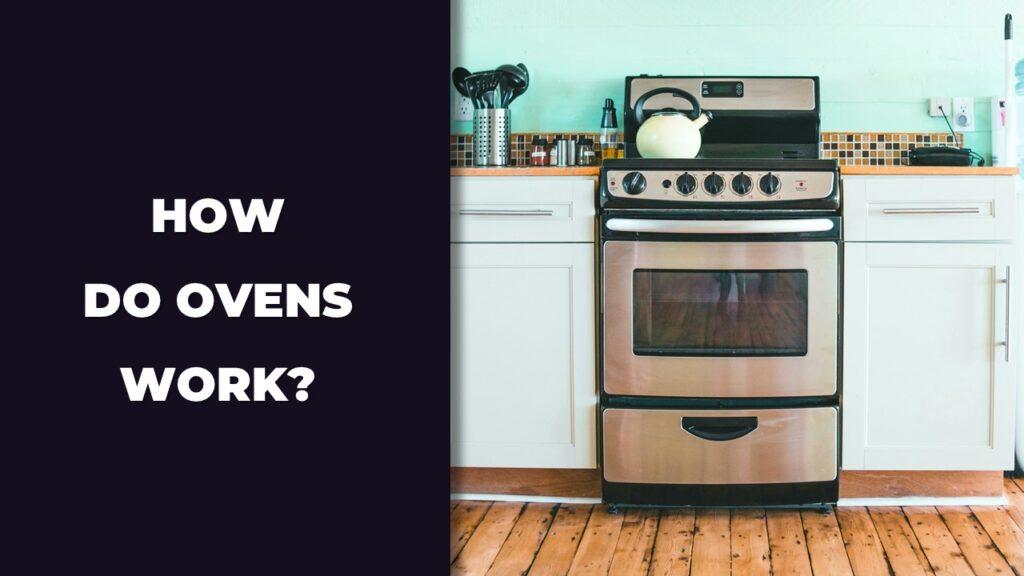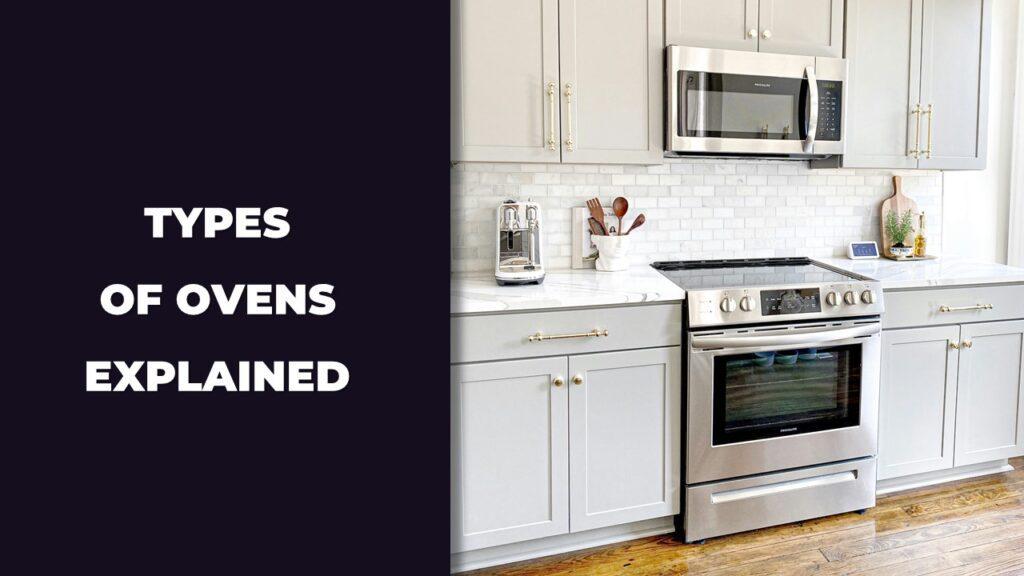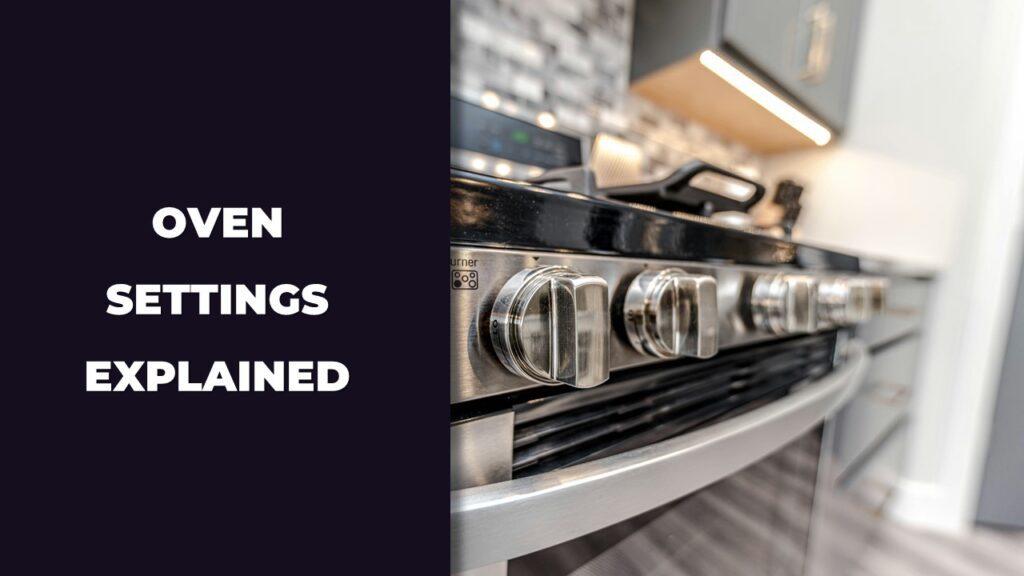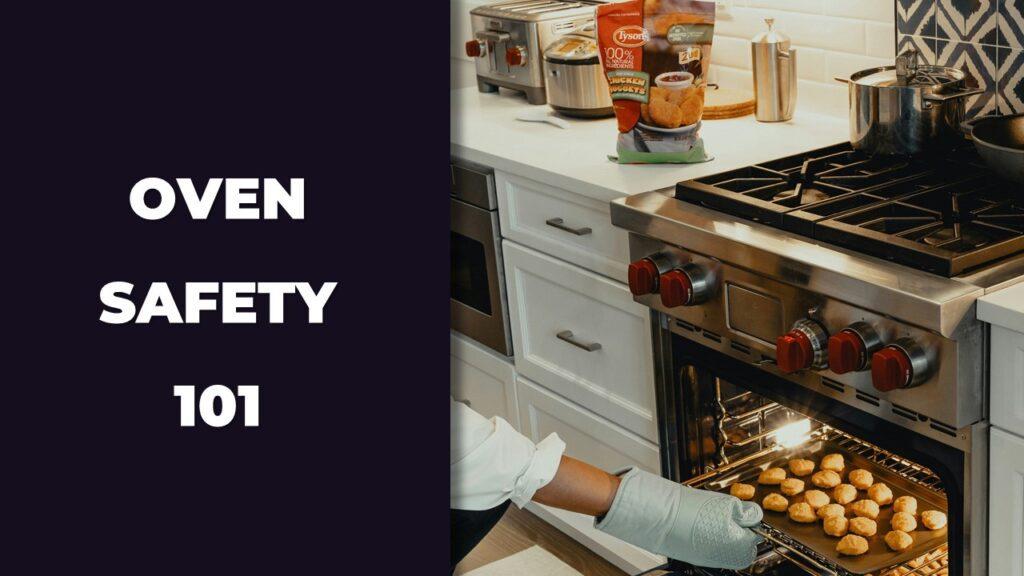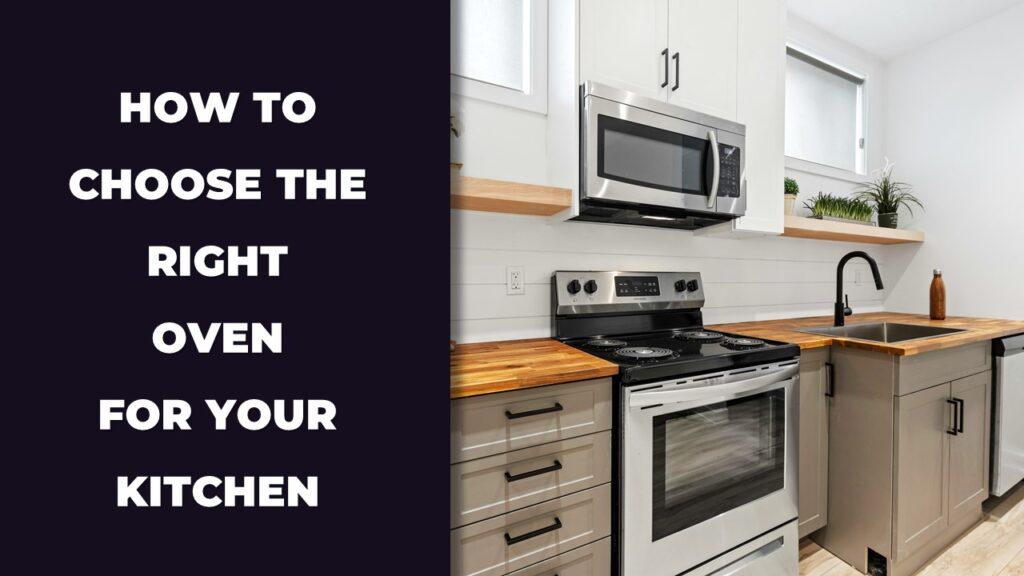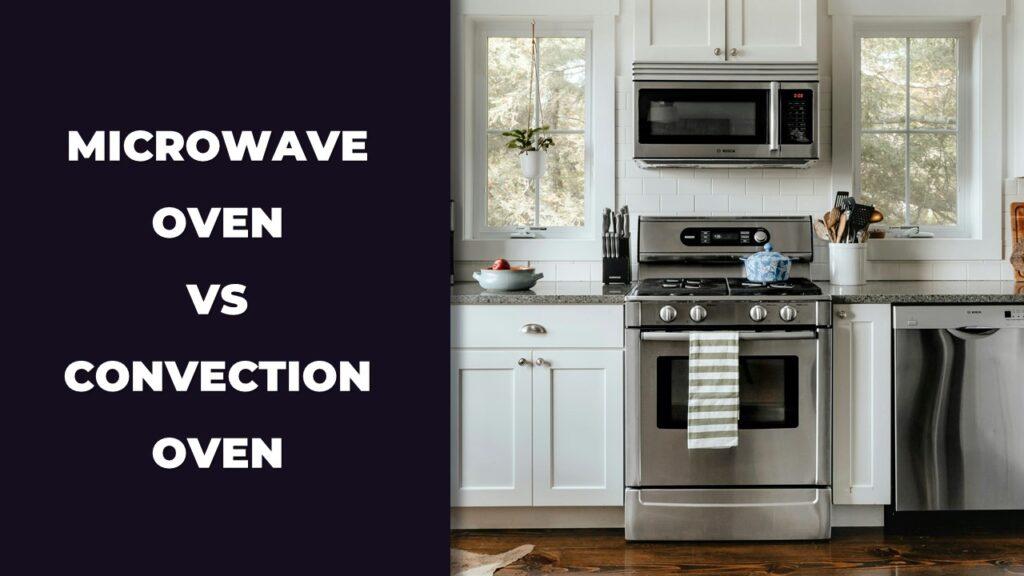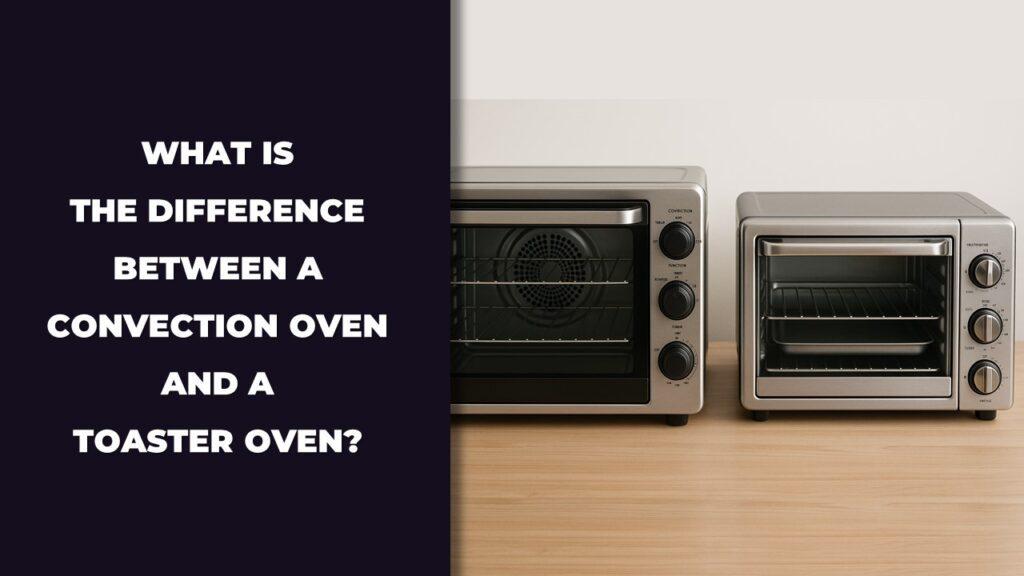
A convection oven uses a fan to circulate hot air, cooking food faster and more evenly. A toaster oven relies on radiant heat from coils, making it better for quick tasks like toasting or reheating.
For frequent baking or full meals, choose a convection oven. For simple, daily use in small spaces, a toaster oven is the better fit.
Let’s break it down clearly; how they work, when to use each, and which one fits your lifestyle best.
What Is a Convection Oven?
A convection oven is a type of oven that uses a built-in fan to circulate hot air, allowing food to cook faster and more evenly than in traditional radiant ovens. This airflow eliminates hot spots, making it ideal for baking, roasting, and multi-rack cooking.
Unlike a standard oven or toaster oven, a convection oven doesn’t just heat the air—it moves it. That constant movement helps maintain a stable temperature throughout the cavity, giving you better texture, color, and cooking speed. Whether you’re baking multiple trays of cookies or roasting a full chicken, a convection oven can handle it more efficiently.
Now, let’s break down how it works and when it’s the better choice.
How It Works (Fan Circulation and Even Heating)
A convection oven comes with a heating element and an integrated fan. As the oven heats up, the fan blows the hot air around the food instead of letting it settle naturally. According to GE Appliances, this circulating heat reduces cooking times by up to 25% and eliminates cold spots, especially when baking multiple trays at once. This simple design change creates several advantages:
- Circulates hot air using a built-in fan: The internal fan keeps hot air moving, preventing temperature gaps.
- Promotes faster, more even cooking throughout the oven: Food finishes quicker and more uniformly, especially when using multiple racks.
- Reduces hot spots, ideal for multi-rack baking: Traditional ovens often leave cold corners. Convection fixes that with constant airflow.
This technology is particularly useful when consistency matters—like when baking delicate pastries, cooking multiple sheets of cookies, or roasting vegetables evenly.
What It’s Best For (Baking, Roasting, Larger Meals)
Convection ovens shine when you’re cooking foods that need even heat throughout:
- Great for cookies, cakes, roasted meats, and vegetables: You’ll get evenly browned tops, crisp textures, and stable doneness across batches.
- Handles larger portions or multiple dishes at once: Whether it’s a full tray of chicken thighs or two lasagnas on separate racks, the airflow helps cook everything evenly without rotating.
This makes convection ovens the go-to choice for home bakers, weekend meal preppers, and families cooking more than one dish at a time.
Pros and Cons of Convection Ovens
Before choosing one, it helps to weigh the advantages and trade-offs clearly:
Pros:
- Faster cooking times: On average, dishes cook 25–30% faster than in radiant ovens.
- More even browning and consistent results: Perfect for baked goods, roasted meats, and crisped sides.
- Versatile for a wide range of dishes: Handles everything from delicate pastries to dense casseroles.
Cons:
- Typically more expensive than toaster ovens: Convection ovens range higher in price due to added features.
- Fan can produce noise during operation: The internal fan makes a gentle humming sound while in use.
- May require recipe adjustments: Standard oven recipes often need a temperature reduction of 20–25°F to avoid overcooking.
Recommended Article: How Do Ovens Work
What Is a Toaster Oven?
A toaster oven is a small electric oven that uses radiant heat from coils to cook or reheat food. It does not use a fan, so heat rises and spreads naturally, often creating uneven temperatures. Toaster ovens are compact and heat up fast, making them ideal for light, everyday tasks like toasting bread or warming leftovers.
While it may look like a mini version of a standard oven, a toaster oven operates more simply. It’s designed for quick, small jobs—not full meal preparation. Still, for many households, it’s a go-to appliance for its speed and convenience.
Here’s how it works, when it’s useful, and what to consider before buying one.
How It Works (Radiant Heating, No Fan)
Toaster ovens heat using electrical coils installed at the top and bottom of the cooking chamber. These coils emit radiant heat, which warms the food directly—no airflow or fan circulation involved.
- Uses electric coils at the top and bottom to generate heat
Heat comes from fixed-position elements that radiate energy like a broiler. - No fan means heat rises naturally and stays uneven
The lack of airflow can create hot zones near the elements and cooler areas elsewhere. - Heats up quickly and functions like a mini oven
Its small size allows it to preheat faster than a full-sized oven, saving time for simple tasks.
This design works well for direct heating but isn’t ideal for dishes requiring uniform temperature throughout.
What It’s Best For (Reheating, Toasting, Small Bakes)
Toaster ovens are best used when speed and simplicity matter more than precision.
- Perfect for toast, pizza slices, frozen snacks, and leftovers
It’s a reliable choice for reheating a slice of lasagna or crisping up leftover fries. - Ideal for single servings or small kitchen spaces
Whether you’re in a dorm, apartment, or office, a toaster oven handles basic needs without taking up much space.
This makes it a solid fit for solo users, students, or anyone who doesn’t cook full meals regularly.
Pros and Cons of Toaster Ovens
Toaster ovens are popular for good reason—but they also come with limitations. Here’s a clear view of both sides:
Pros:
- Affordable and budget-friendly: Most models are inexpensive and cost less than full-size or convection ovens.
- Compact and easy to use: They fit on small countertops and have simple controls.
- Heats quickly for small tasks: Preheat time is minimal, ideal for quick snacks or last-minute reheats.
Cons:
- Uneven heating in some corners: Without a fan, heat distribution can be inconsistent, especially on large or thick items.
- Limited interior space: You can usually cook one or two items at a time—not suitable for batch cooking.
- Slower for certain dishes compared to convection ovens: Foods like roasted vegetables or baked casseroles may take longer and turn out less evenly cooked.
What Is the Difference Between a Convection Oven and a Toaster Oven?
The key difference between a convection oven and a toaster oven is how they heat food: convection ovens use a fan to circulate hot air for faster, more even cooking, while toaster ovens rely on direct radiant heat from coils and tend to cook slower and less evenly. This makes convection ovens better for baking and roasting, while toaster ovens are more suited for quick, light tasks like reheating and toasting.
Both appliances are compact and sit on your countertop, but their performance and use cases are not the same. Understanding how each one functions helps you decide which is right for your kitchen and cooking habits.
Here’s a side-by-side comparison that clearly outlines how they differ across the features that matter most.
Comparison Table: Convection Oven vs Toaster Oven
| Feature | Convection Oven | Toaster Oven |
| Heating Method | Fan-forced air circulation | Radiant heat from top and bottom coils |
| Cooking Speed | 25–30% faster | Standard speed |
| Evenness of Cooking | Very even, minimal hot spots | May cook unevenly in corners |
| Size and Capacity | Larger, fits multiple dishes | Smaller, fits 1–2 servings |
| Best Use Cases | Baking, roasting, full meals | Toasting, reheating, light baking |
| Price Range | $100–$300 | $40–$150 |
| Energy Consumption | Higher due to fan and longer sessions | Lower, best for quick tasks |
| Cleaning | Multiple components, more cleanup required | Simple to clean and maintain |
| Noise Level | Audible fan noise | Quiet operation |
If energy use matters in your decision, it helps to compare how much electricity these ovens typically draw. Here’s a breakdown of average wattage and estimated daily energy use for convection ovens and toaster ovens based on U.S. household usage:
Energy Usage Comparison: Convection Oven vs. Toaster Oven (U.S. Averages)
| Appliance | Average Wattage | Typical Usage per Day | Estimated Daily Energy Use (kWh) | Monthly Cost (Approx.)* |
| Convection Oven | 2000–2500 watts | 1 hour | 2.0–2.5 kWh | $9.63–$12.04 |
| Toaster Oven | 1200–1800 watts | 0.5–1 hour | 0.6–1.8 kWh | $2.89–$8.69 |
*Based on U.S. average electricity rate of $0.1608 per kWh.
Even though convection ovens offer better performance for full meals, they do use more power—especially if you cook often. Toaster ovens are more efficient for quick tasks and can save on your monthly bill if used regularly for smaller portions.
Which One Should You Choose?
If you cook full meals regularly or love to bake, choose a convection oven. If you mostly reheat food, toast bread, or have limited space, a toaster oven is the better fit. Your choice should depend on how you cook, how often, and how much space or budget you have.
Both appliances have their strengths. One isn’t better than the other for everyone—it’s about matching the oven to your lifestyle. Below is a quick reference to help you decide, followed by more detail based on specific needs.
Quick Decision Guide
| If You… | Go For… |
| Bake cookies, cakes, or whole meals | Convection Oven |
| Just reheat leftovers or toast bread | Toaster Oven |
| Have limited space or live in a dorm | Toaster Oven |
| Cook large batches or host often | Convection Oven |
| Want faster cooking and even results | Convection Oven |
| Have a tight budget and basic needs | Toaster Oven |
Based on Your Cooking Style
If you enjoy baking, roasting, or meal prepping, a convection oven will give you the consistency and speed you need. Its circulating hot air is especially useful for baked goods and multi-rack cooking.
For lighter, daily tasks like reheating leftovers or making toast, a toaster oven is more practical. It’s simpler to use and gets the job done quickly without heating your whole kitchen.
Based on Kitchen Space
Convection ovens take up more counter space and may need extra room around them for ventilation. This makes them better for larger kitchens or permanent setups.
Toaster ovens are compact and fit neatly on small counters or in tight corners. They’re ideal for small apartments, dorms, or secondary use in an office kitchen.
Based on Budget
If you’re looking for an affordable solution for daily heating or light cooking, toaster ovens are easier on the wallet. Most models cost significantly less than convection ovens.
Convection ovens, while more expensive, offer added value for those who cook more frequently or want better cooking performance. It’s a good long-term investment if you use it often.
Based on Meal Size and Frequency
Families or those who prep meals in advance will benefit from the larger capacity and faster cooking times of a convection oven. You can bake trays of food without worrying about uneven results.
Solo eaters, students, or anyone cooking one plate at a time will find toaster ovens much more convenient. They’re perfect for quick, single-portion meals without the wait.
Common Mistakes People Make When Choosing Between the Two
One of the most common mistakes people make when choosing between a convection oven and a toaster oven is assuming they perform the same. They don’t. A convection oven uses a fan to cook more evenly, while a toaster oven does not—leading to different results, especially with baking or larger meals.
Other missteps include focusing only on price, ignoring kitchen space, or overlooking key functional differences. These decisions can lead to frustration, wasted money, or appliances that don’t fit your needs.
Here are the mistakes to avoid when deciding which one to buy:
- Assuming toaster ovens cook like full ovens: Many buyers expect toaster ovens to bake like a standard or convection oven. But without fan circulation, toaster ovens often produce uneven results—especially in baking.
- Ignoring counter space and ventilation needs: Convection ovens typically need more room and proper airflow. Choosing one without measuring space can lead to overheating risks or poor placement in your kitchen.
- Choosing based only on price instead of actual usage: A cheaper toaster oven might look appealing, but if you bake often or cook for several people, it may not meet your needs. Matching the appliance to your habits matters more than saving a few dollars upfront.
- Forgetting that convection ovens may require recipe tweaks: Because they cook faster and more evenly, convection ovens often need lower temperatures or shorter times. Many people forget this and end up with overcooked food.
Final Verdict – Convection or Toaster?
If you cook full meals, bake often, or want faster, even results, go with a convection oven. If you mostly reheat food, toast bread, or need something compact, a toaster oven is a smarter choice. You don’t need both—just the one that fits your habits, space, and budget.
Both appliances serve different needs. A convection oven offers better performance for baking, roasting, and large portions thanks to its fan-powered air circulation. It’s the right fit for people who cook frequently and want consistent results.
A toaster oven is better suited for smaller, everyday tasks. It heats quickly, uses less energy, and fits into tight spaces—ideal for singles, students, or anyone who doesn’t need a full oven every day.
Don’t choose based on price alone. Think about how you cook, how often, and what matters more: speed and evenness or simplicity and convenience. That answer will guide you to the right oven—without second guessing it later.
Frequently Asked Questions
Is a convection toaster oven the same as a convection oven?
No. A convection toaster oven uses a fan like a convection oven but is smaller and less powerful. It’s better for light tasks and won’t deliver the same even results as a full convection oven.
Can I bake a cake in a toaster oven?
Yes, you can bake a cake in a toaster oven. However, without a convection feature, it may brown unevenly or rise inconsistently due to less controlled heat distribution.
Does a toaster oven get as hot as a convection oven?
Toaster ovens can reach similar temperatures, but they don’t distribute heat as evenly. This can lead to overcooked edges or undercooked centers in larger or denser foods.
Can I use aluminum foil in either oven?
Yes, you can use aluminum foil in both, but never block air vents or fan circulation in a convection oven. Always follow your model’s safety guidelines.
Do convection ovens cook faster than toaster ovens?
Yes. Convection ovens cook 25–30% faster because the fan moves hot air evenly around the food, reducing cook time and improving consistency.
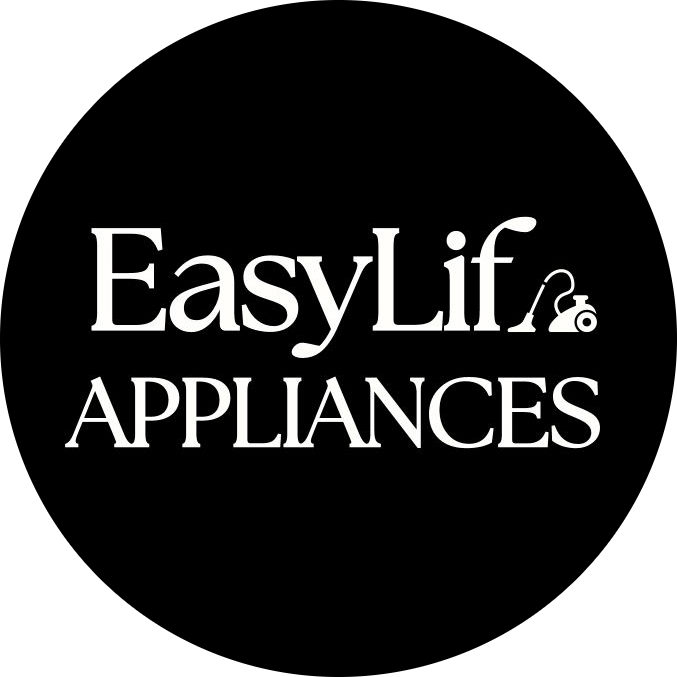
At our core, we’re a group of passionate households and gardening tools and appliances users and enthusiasts. We dive deep into the world of tech, especially when it’s about your household or gardening electric items. We try to provide as much value to the readers with our information and how to blog articles as possible. For affiliate articles our honest and transparent reviews of essential tech products are rooted in real-world experience. We take great satisfaction in offering unbiased evaluations, ensuring that you can make informed decisions when investing in your desired techs.

